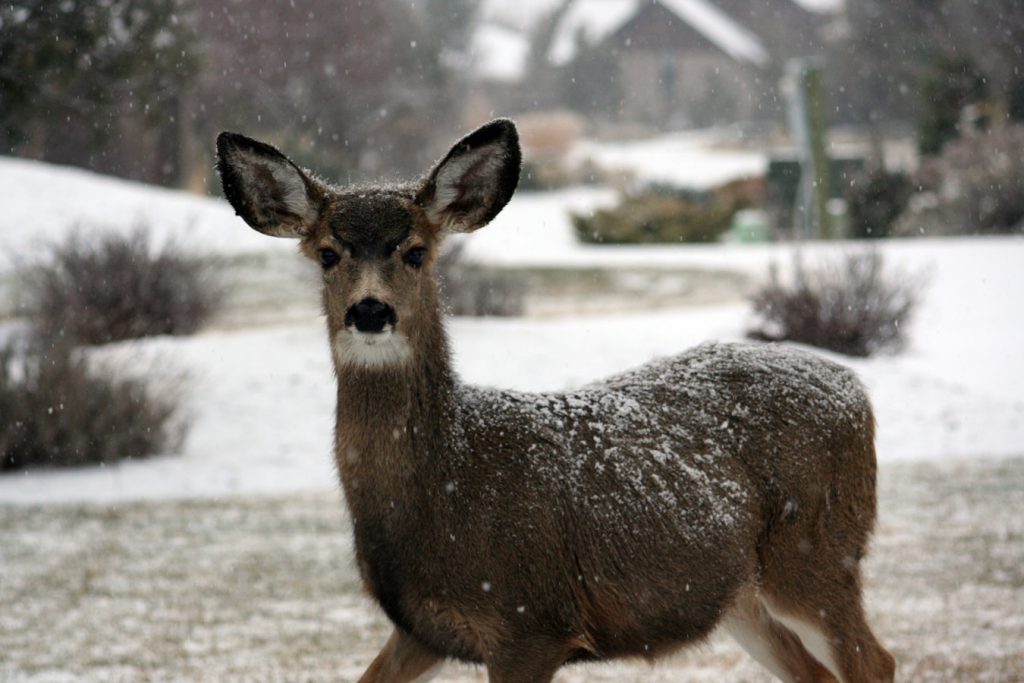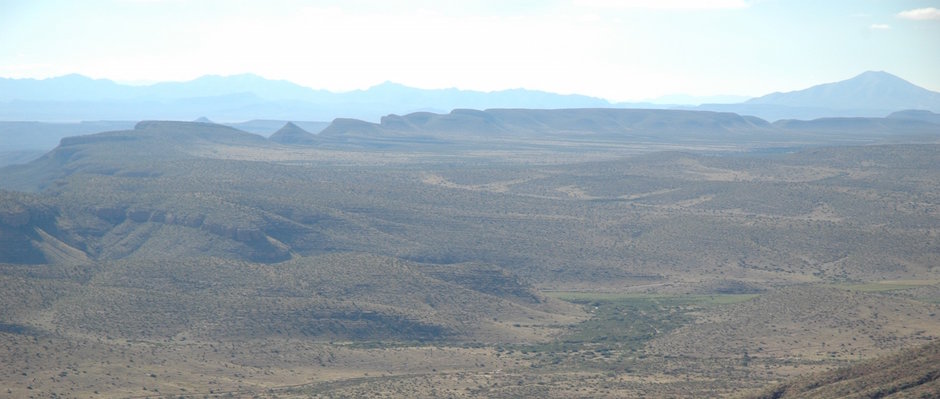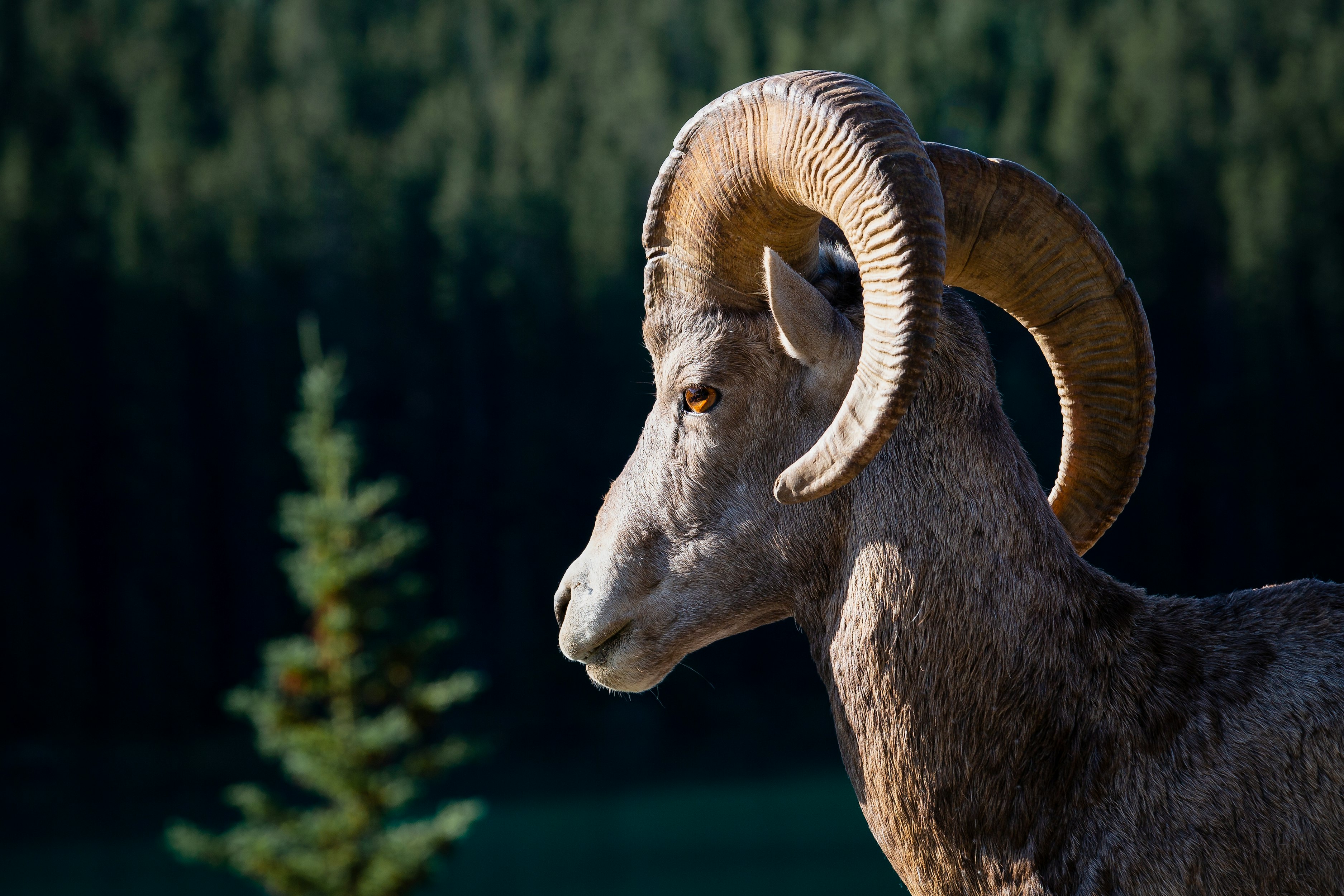Fire May Be the Only Remedy for a Plague Killing Deer and Elk
The noted agronomist and “Father of Soil Fertility” Professor William A. Albrecht said, “We should not fear the aggressive parasite and invader but rather the declining health of their victims.” He said this 80 years before the terms “environmentalism” or “holism” had been coined, in an era when attacks on nature were mild compared to today.
CWD was started in a government experimental station. Like its cousin, Mad Cow Disease, it is spread by the confinement of animals in overcrowded conditions, part of the larger body of industrial agricultural practices which have been adopted to “manage” wildlife. These include artificial feed and supplements of minerals, hormones, antibiotics and other additives.
Combined with the fake science of “invasive species biology,” which says habitats and animal communities are threatened by “competition” from “invasive” plants and animals (many of which are natives) we now routinely attack biodiversity through destocking of rangelands, “exotic” and “invasive” animal eradications, predator removals, range poisons and widespread burning. Many so-called experts say these practices are beneficial. Actually, they make plants, animals and soil life susceptible to illness and parasites, leading animals and people, in Albrecht’s words, “…To degenerative metabolic disease and early death.”
Albrecht believed all animals have an inherent capacity to select the foods they need for healthy diets. Deer and elk, like humans, are in danger because their food is grown from increasingly unhealthy soils. “The degenerative diseases of the modern world need to be traced, not only to the supplies in the feed and food – but a bit farther and closer to their origin, namely the fertility of the soil…”.
There will be no “silver bullet” for CWD. Fire, guns and chemicals treat symptoms, not root causes. Inappropriate responses to the unintended consequences of applying industrial agronomic principles to ecological systems only make things worse. Albrecht’s common-sense observation was that animal health and soil health are the same thing. Until this insight—and holistic thinking—guide our wildlife practices, our treasured mule deer, pronghorn, elk, bighorn, quail and their habitat will continue the irregular, long-term declines which the “experts” can neither explain nor reverse.
NOTE: The article below is from NYTimes.com. The author is Carl Zimmer. Images are from the article, and properly credited. Feature photo is from Unsplash.com and we are following usage guidelines.
Mark D. Zabel wants to set some fires.
Dr. Zabel and his colleagues are developing plans to burn plots of National Park Service land in Arkansas and Colorado. If the experiments turn out as the researchers hope, they will spare some elk and deer a gruesome death.

Across a growing swath of North America, these animals are dying from a mysterious disorder called chronic wasting disease. It’s caused not by a virus or bacterium, but a deformed protein called a prion.
When ingested, prions force normal proteins in the animal’s body to become deformed as well. Over the course of months, prions can gradually wreck the animal’s nervous system, ultimately killing it.
This year is the 50th anniversary of the discovery of chronic wasting disease. In the September issue of Microbiology and Molecular Biology Reviews, Dr. Zabel, an immunologist at Colorado State University, and his former graduate student Aimee Ortega survey what scientists have learned about the slow-spreading plague.
It makes for ominous reading. “There’s a lot that we still don’t know and don’t understand about the disease,” Dr. Zabel said in an interview.
Once chronic wasting disease gets a foothold, it can spread relentlessly. It’s now documented in 24 states, and continues to expand into new ranges. In some herds, as many as half of the animals carry prions.
Direct contact, it turns out, may not be the only way in which prions are transmitted. Sick animals and cadavers spread prions across the landscape. Plants and soil may remain coated with deformed proteins for years, perhaps even decades.
Dr. Zabel now suspects that the only way to rid the land of them is to set controlled fires.
It was at Colorado State University, in 1967, that wildlife biologists first observed some captive mule deer developing a strange new disease. The animals lost weight and awareness of their surroundings. The symptoms slowly worsened until the mule deer died.
“They’re not hard to pick out at the end stage,” Dr. Zabel said. “They have a vacant stare, they have a stumbling gait, their heads are drooping, their ears are down, you can see thick saliva dripping from their mouths. It’s like a true zombie disease.”
It wasn’t until much later that researchers discovered that chronic wasting disease belongs to a small group of conditions caused by prions. But other prion diseases are known only to affect livestock or people, not wildlife.
Scrapie, for example, is a deadly disease that afflicts sheep. A number of studies indicated that bone meal contaminated with scrapie prions passed the prions to cows. The cows developed a prion disease of their own, called bovine spongiform encephalopathy, nicknamed mad cow disease.
In rare cases, people who ate beef from the sick cows developed prions in their own brains. As of 2016, 231 people had died from the condition worldwide.
Scientists long suspected that deer and related species developed chronic wasting disease by picking up scrapie from sheep flocks kept at Colorado State University. The disease then turned up in other states and Canada as animals were shipped to private game farms.
But Dr. Zabel now believes that the birth of chronic wasting disease may be more complicated.
Prions are misfolded versions of a naturally occurring molecule called cellular prion protein. Experiments carried out in Dr. Zabel’s lab suggest that cellular prion protein in deer and related species may be unusually prone to misfolding.
“We were able to generate a new prion,” Dr. Zabel said. “Maybe this is a spontaneous disease.”
That result might explain a startling finding last year: researchers came across a prion-riddled reindeer in Norway, the first time chronic wasting disease had been found in Europe. Since then, two more have been found, and Norway in April approved the culling of over 2,000 reindeer to stop the spread.
Dr. Zabel and other scientists are trying to figure out how chronic wasting disease has become so successful. One factor is how the prions spread through an animal’s body. They aren’t limited to the brain in deer, elk or moose. The prions also sweep through lymph nodes and the spleen.
As a result, Dr. Zabel and his colleagues have found, infected animals can release huge numbers of prions. “We found it in urine, in saliva and in feces,” he said.
Other members of a herd can get sick by making direct contact with a shedding animal. But the way the disease is spreading across North America suggests that the prions is are also using other routes to get to new hosts.
If deer got sick only by direct contact, for example, you would expect the outbreak to be most severe in the Midwest, where populations are densest. But some of the worst outbreaks are in the Rocky Mountains, where there are fewer animals.
Mathematical models suggest that animals are getting sick from prions in the environment. In additional to the prions shed while a sick animal is alive, its cadaver can release another bounty of deformed proteins onto the ground.
Some studies suggest that these prions can end up on grass and other plants, which are then eaten by healthy animals. Some prions in the soil may bind to minerals. It’s possible that animals may sometimes pick them up if they eat bits of dirt.
Compared with viruses or bacteria, prions are impressively rugged. In a forest or on a prairie, a prion may be able to hang around for years, still able to infect a new animal. As herds migrate along the same route year after year, the supply of prions in the environment may keep increasing.
Scientists have also found genes that give some animals resistance to prions. It’s hoped that resistant animals will reproduce enough to maintain the populations of herds.
Still, Dr. Zabel worries, the supply of prions in the environment someday might push many herds past a tipping point. “That could result in herd decimation and population declines,” he said.
Dr. Zabel is also concerned about the potential threat chronic wasting disease might someday pose to humans.
So far, there have not been any documented cases in which people got sick from eating meat from sick animals. “That doesn’t mean it won’t happen,” Dr. Zabel warned.
His own experiments showing how easily cellular prion proteins can fold into a dangerous shape suggest that prions may have a potential to become more harmful. “We may just be in the early stages,” he said.
In their review, Dr. Zabel and Ms. Ortega write that researchers have found a number of ways to fight prions. Researchers have found they can rid surgical instruments of prions in an ozone bath, for example.
But such treatments are impractical in the wild.
Instead, Dr. Zabel and his colleagues hope to test controlled burns. While the fires won’t be hot enough to destroy the prions, they might kill off enough prion-laden plants to lower the odds of healthy animals getting sick.
The researchers will test this hypothesis by seeing if the prevalence of chronic wasting disease drops after they set their fires.
Dr. Zabel said he has encountered some stiff skepticism about his plan. But he still thinks it is the only plausible way to put a brake on the prions.
“If you eliminate the plants that have prions on the surface, that would be a huge step forward,” he said. “I really don’t think it’s that crazy.”
Follow Carl Zimmer on Twitter @carlzimmer
Like the Science Times page on Facebook. | Sign up for the Science Times newsletter.
A version of this article appears in print on , on Page D5 of the New York edition with the headline: For a Wildlife Plague, the Only Cure May Be Fire



